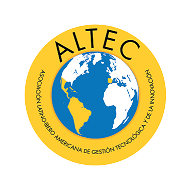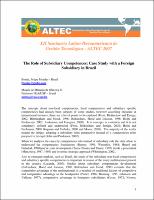| dc.description.abstract | The concepts about non-local competencies, local competencies and subsidiary specific competencies had already been subjects of some studies, however according literature at international business, there are a lot of points to be explored (Frost, Birkinshaw and Ensign, 2002; Birmingham and Hood, 1998; Birkinshaw, Hood and Jonsson, 1998; Holm and Perderesen, 2002; Andersson and Forsgren, 2000). It is concepts in evolution and it is not completely defined and understood (Frost, Birkinshaw and Ensign, 2002; Holm and Perdensen, 2000; Rugman and Verbeke, 2000 and Moore, 2001). The majority of the works treated the subject adopting a subsidiary roles perspective instead of a competencies roles perspective (except Holm and Perdersen, 2002). When we analyses the cases by competencies role instead of subsidiary role the view allow to understand the competencies foundations (Barney, 1991; Wernefelt, 1984; Hamel and Prahalad, 1990)you’re your development (Teece Pisano and Shuen; 1997) inside a procedural (Mintzberg; 1987, 1989) and systemic strategic approach (Whittington, 2002). Also to emergent markets, such as Brazil, the study of the subsidiary non-local competencies and subsidiary specific competencies is important in reason of the many multinational present in the country (Lacerda, 2003). Studies about subsidiary competencies development (Birkinshaw, Hood and Jonsson, 1998; Birkinshaw and Hood, 1998) estimate that the competitive advantage of the multinationals is a resulted of traditional factors of competitive and comparative advantage in the headquarter (Porter, 1986; Dunning, 1993; Johanson and Valhene, 1977), comparative advantage in foreigners subsidiaries (Caves, 1972; Vernon, 2 1966; Dunning, 1993); but it is also, consequence of competitive advantage created in the foreigners subsidiary (Rugman and Verbeke, 2001; Birkinshaw, Hood and Jonsson, 1998). Thus, the paper proposal is understand the subsidiary competences roles like a main factor to strategic subsidiary roles.. However to development of core competencies (Hamel and Prahalad, 1990; Fleury and Fleury, 2001; Ruas, 2004; Mills et. alli, 2002) the multinationals need explored the foreign countries in order to find national clusters (Porter, 1998; Birkinshaw and Hood, 1998b) and global business networks (Anderson, Forsgreen and Holm, 2002; Anderson and Forsgreen, 2000, Frost, 2002). Natural resources, work and market factors knowledge like traditional factors are not sufficient to create and develop competences. It is necessary more, like government, supply companies, laboratories, researches centers, universities, etc, to improve the competitiveness. Thus to understand how competencies are created and developed is necessary understand the environmental and network where subsidiaries are embed. On the other hand, the subsidiary performance are result of strategies proceeding from scarce firm resources (Fleury and Fleury, 2001), subsidiaries initiatives (Birkinshaw, 1996, 1997; Birkinshaw, Hood and Jonhsson, 1998) intrapreuneship processes (Birkinshaw, 1997); path dependence (Hakansson and Waluszewski, 2002); communication between network inside of the company (Rezende, 2000a; 2003b; Frost, 2001; Anderson, Forsgreen and Holm, 2002); capacity of transferring competencies (Law, Hitt and Bettis, 2001; Gupta and Govindarajan, 2001, 2000; Doz, Santos and Williansons, 2002) and dynamic capabilities (Eisenhardt and Sull; Eisenhardt and Martin, 2001; Tecce Pisano and Shuen, 1997). Thus, besides understanding the environmental variable it is necessary to understand the way that internal factors influence the development of competencies roles. | |


